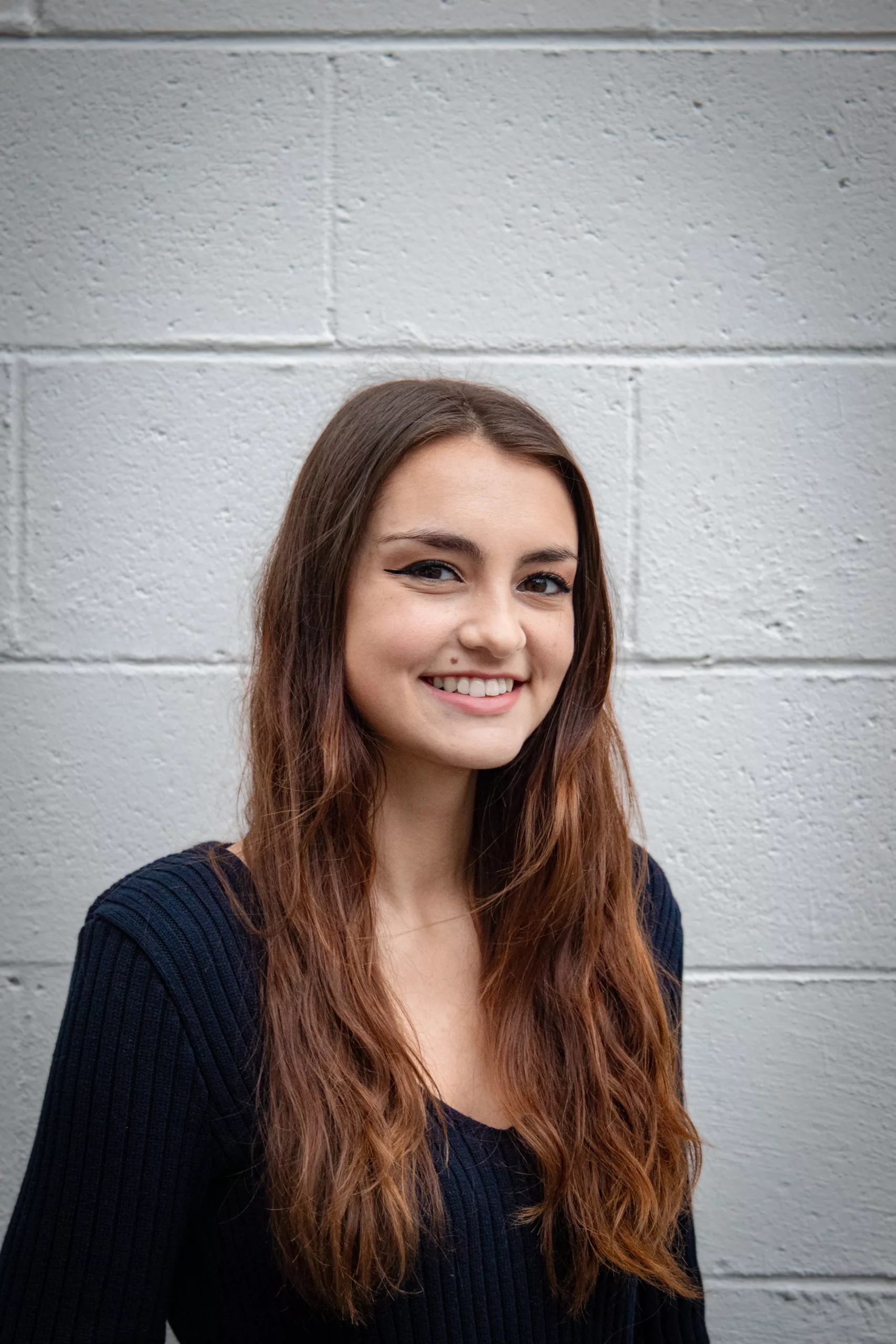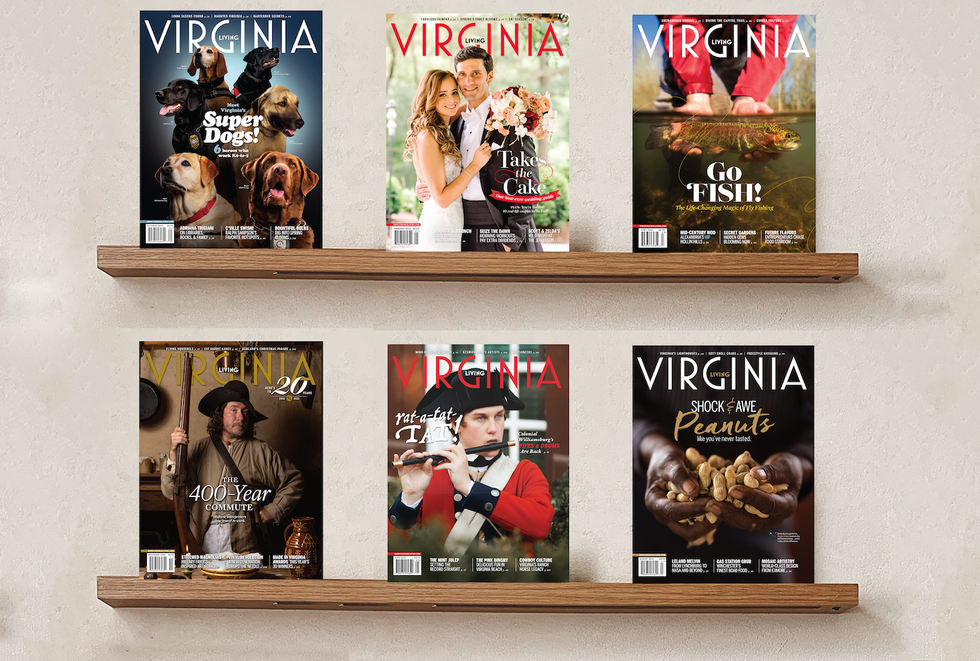Exploring the subtlety of Elaine Tucker-Haviland’s brilliant transformations.
The immaculate wood grain of Historic Shirley’s front doors speaks to the history and imminence of the centuries-old house. One can imagine the majestic old tree that must be responsible for the enchanting natural pattern inviting guests inward.

But it’s not a tree behind the whorls, arches, and layered shades of umber. Historic decorative painter and master faux finish artist Elaine Tucker-Haviland hand painted this grain onto Shirley’s new doors—each day for several weeks in the spring, trekking from Richmond to Charles City with her brushes and paints to add another layer to the façade.
Tucker-Haviland’s first love is wildlife art, leading her to work as a secretary at the former Department of Game and Inland Fisheries (now DWR, the Department of Wildlife Resources) in Richmond in her twenties. “I wore many hats,” Tucker-Haviland says. “I got to do a lot of different things besides secretary—wildlife photography, graphic art for the magazine.” But at the end of the day, she says, “it wasn’t enough art.”
Then in 1984, at age 27, Tucker-Haviland saw an advertisement for a faux finish seminar at the New York Academy of Fine Arts with Joanne Day, an artist who was partly responsible for reigniting the technique’s popularity. There, she learned how to turn plain concrete, metals, and woods into masterpieces. This kind of art was ideal: a mix of studying patterns in nature, celebrating and preserving history, and fine painting. When Tucker-Haviland returned to Virginia, she promptly quit her job at the DGIF and started her business, Faux Finish Creations.

Since then, Tucker-Haviland has recreated wood and stone natural textures on grand scales. Her first project was Washington-Franklin Hall at Randolph-Macon College in Ashland, where she painted 5,000 square feet of wall to look like sandstone blocks. Each stroke must be done with precision to ensure the mark of the artist is not obvious. “I’m not just a ‘put a coat of paint on’ type of girl; I really care about what I’m doing,” Tucker-Haviland says.
Tucker-Haviland’s work is so detailed, so minutely similar to the natural patterns she mimics with her paints, that when she’s done, you won’t ever know she’s been there. Lauren Carter, who is married to the 11th-generation steward of Shirley, hired Tucker-Haviland for that reason. On a 2023 tour of the recently refurbished Battersea, an historic home in Petersburg, Carter couldn’t believe the grain on the doors was hand painted. She learned it was the result of Tucker-Haviland’s handiwork, and now, after commissioning a faux finish herself, the difference it makes is striking to her.
Standing at the edge of Shirley’s sweeping courtyard, more than 100 yards from the house’s doors, Carter says, “I can tell the difference from here. It looks deeper and richer. Plain painted brown wasn’t doing them justice.”
If you develop an eye for the near-imperceptible details of faux finish mastery, you’d realize it’s difficult to find a landmark in Richmond without Tucker-Haviland’s mark on it. Her finishes, murals, and hand-painted wallpapers grace the walls and doors of buildings including the Executive Mansion, the Science Museum of Virginia, Monumental Church, Altria Theater, The Jefferson Hotel, and the State Capitol.
The historical builds are some of Tucker-Haviland’s favorite works. Whether it’s a faux grain or stone print made to mimic the original look of the architecture or a traditionally inspired trompe l’oeil ceiling mural, Tucker-Haviland sees her art as a way to retain lost arts and forgotten history. “It’s to preserve something that means so much to the world, because Virginia is so rich in history where other states aren’t: it was all destroyed and wiped out,” she says.
History isn’t just in public edifices, so neither is Tucker-Haviland’s artwork. She embraces chances to revitalize private residences by redoing antiquated elements fallen to the wayside. Her resumé includes several Fan houses, where she’s done many scagliola
finishes on the area’s characteristic slate mantels to remake
original designs from the early 1900s. Because Tucker-Haviland’s updates fill walls, floors, molding, and built-ins, her mark becomes embedded into the foundation of each home she touches, so she approaches residential projects as meaningful collaborations.
“I take it from their surroundings—the fabrics, the furniture, the culture, and their spirit—and bring it all together and create something that makes them home,” she says. Whatever wallpaper, column, door, or ceiling she takes her brush to, she prioritizes the life of the home, keeping it pure and authentic. “It’s a way to take pride in your environment and express your individuality and make it a home, a sacred space, a sanctuary.”
No matter the reason for the faux finish redesign, Tucker-Haviland says, “every one is exciting, because they’re always a different challenge. Seeing the face of the client so thrilled and enriched by what I do is the gift.”

Beyond the Brush
Discover the array of tools in a faux finish artist’s arsenal.
A faux finish artist’s tools are as meticulous as their delicate creations. With the right supplies, one can achieve the desired seamless aesthetic. “You can’t tell the tool that was used,” Tucker-Haviland says. It wasn’t always that way in the art form.
“There were a lot of people that jumped on the faux finish bandwagon in the ’80s with sponging, and you could see every sponge mark,” Tucker-Haviland says. “That’s not how I like to work.” For an authentic, barely-there appearance of paint in a project, her tools range from standard paintbrushes to combs, rags, paper, and even fresh bird feathers.
Tucker-Haviland uses turkey feathers on her marbling work, a method she learned in a course she took in New York with Joanne Day based on tips from The Art of the Painted Finish for Furniture & Decoration by Isabel O’Neil. Tucker-Haviland even sourced the feathers directly from Virginia hunters with her connection to the DGIF, until the process of counting turkey populations was digitized. The fine, spider web-like veins running through the lapis blue marble imitation on Monumental Church’s towering altar, for example, were crafted with these unusual paint “brushes.”


Hampden-Sydney Photos

Hampden-Sydney’s View of the Heavens
In one creative infusion of history in a piece, Tucker-Haviland studied old manuscripts and astrological charts to correctly depict the sky over Hampden-Sydney College on its first day of class, Nov. 10, 1775. She collaborated with scientists at the Science Museum of Virginia to calculate the stars’ positioning and their luminosity, all of it reflected in her ceiling mural at the college’s Bortz Library. Look up in the library’s cupola, and you’ll see a fantastic mural of the “View of the Heavens” 45-feet high. It adopts an Old World cartography style, adorned with mythological figures, animals, and stars of varying size, shape, and gilded brightness, each one historically accurate to 1775. “Even though I’m in many buildings that are in history books, this one is my pride and joy,” Tucker-Haviland says.
This article originally appeared in the August 2024 issue.









